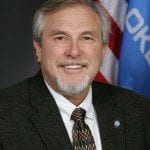BY DAVID PERRYMAN
 Sometime in the early 1300’s, according to Spanish tradition, the guys who were in charge of delivering bulls to the bullfight found themselves in a quandary. For whatever reason [possibly a zoning code], the bullring was located on one side of town and the corrals were on the other.
Sometime in the early 1300’s, according to Spanish tradition, the guys who were in charge of delivering bulls to the bullfight found themselves in a quandary. For whatever reason [possibly a zoning code], the bullring was located on one side of town and the corrals were on the other.
Since the internal combustion engine was 700 years in the future, loading the bulls into a truck was not an option. Consequently, the livestock company determined that the most practical means to get the bulls across town was through the streets.
One can only imagine the difficulty encountered before the local planning commission and the board of adjustment. At the public hearing, it would have been natural for a number of merchants to have expressed concern about the economic impact and we can be sure that the term “bull in a china shop” was tossed about.
Ultimately, the city approved the route that the bulls would take in the annual San Fermin Festival. Assumedly, a condition of the permit was to require that they be moved with the utmost haste, thus the festival is now known worldwide as the Pamplona Bull Run.
Annually, for eight days in July, crowds gather to watch or participate in the running of the bulls. Runners gather around the statue of Saint Fermin, patron saint of the festival and sing a benediction prayer. Most runners are dressed in white shirts and trousers with a red waistband and red neckerchief and are armed with a rolled up newspaper to divert the attention of the bulls.
Like clockwork at 8 a.m. each morning of the festival, a rocket is fired to signal hundreds of runners that the six bulls selected for the afternoon’s bullfight together with nine steers have been released and are on their way to the arena.
For the next four minutes as the livestock traverse the 903-yard distance through the old town, runners sprint for their lives.
The festival was immortalized by Ernest Hemingway in his 1926 novel The Sun Also Rises. Coincidentally, Hemingway’s grandson John and his great-grandson Michael were in Pamplona last week at the 2014 running of the bulls where Michael was photographing the festival. Also present was a family friend, American writer Bill Hillmann, who was participating as a runner.
Unfortunately, Hillmann collided with another guy who was running in the opposite direction. One would think that the absolute most important, most critical piece of information that anyone who is sharing a street with charging bulls needs would be the direction from which the bulls were coming. Most people would instantaneously deduce that they should head the opposite direction.
Blame it on the language barrier. Blame it on a lack of adequate signage. Heck, blame it on stupidity, but these two runners were definitely not on the same page. At the instant of collision, as both men fell to the street, I am certain that the American would have been overjoyed to have seen a good old Oklahoma rodeo clown.
Alas, no such luck. Perhaps Bandy had not renewed his passport. Hillmann was gored twice in the right thigh. His injuries were serious, but not life threatening. He will live to write again, and I am sure that Michael Hemingway got some great action photographs.
Unfortunately, at times it appears that the Oklahoma Legislature is as directionally challenged as are the bull runners of Pamplona.
From “annual attempts to reform annual education reform” to “tax cuts in the face of budget shortfalls” the Legislature has shown that its compass of reason has spun out of control.
The most recent contradiction in direction relates to wind farms, studies of wind farms and attempts to place moratoriums on them in certain sections of the state. While wind farms have been allowed with virtually no regulation, apparently someone with political clout has convinced lawmakers that neighbors should be entitled to input when a wind farm is proposed.
SB 1440 which is sure to re-appear in some form attempts to set up one set of rules for land east of Interstate 35 and a different set of rules for land west of that arbitrary dividing line. If the author of the bill wanted to alter private property rights for better or worse, it would appear that the citizens of eastern Oklahoma and western Oklahoma should not have inconsistent rules.
This departure from good for the goose and gander ideology is not only improper but is also unconstitutional, particularly when it imposes two separate rules for each of the dozen or so counties that are divided by the I-35 right of way.
If neighbors in eastern Oklahoma deserve input before wind turbines are installed, it would seem that citizens who reside in western Oklahoma are just as deserving. When exceptions eclipse the rules, there are no rules.
Oklahoma needs direction before we all get trampled.
– David Perryman, a Chickasha Democrat, represents District 56 in the Oklahoma House of Representatives








